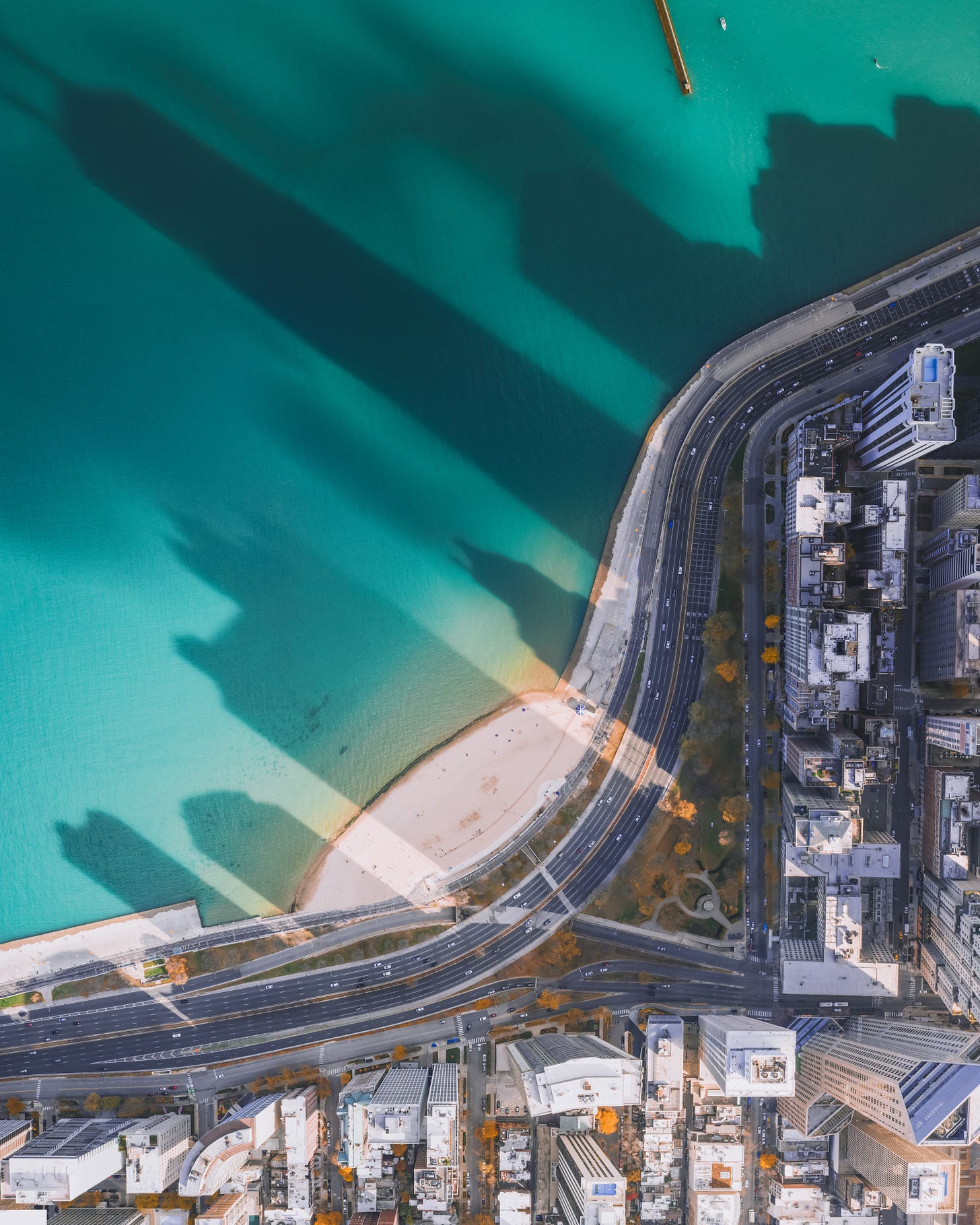Chicago's lakefront: Forever open, clear and free?
It hasn't always been the case, but a conservation group launches an effort to protect this precious green space.
Chicago’s lakefront is something that distinguishes us. Miles and miles of green space along Lake Michigan, one of the world’s largest freshwater bodies. A key migratory path for millions of birds and home to some of our most unique and endangered forbs, rushes, and sedges. Beautiful beaches within an easy walk or bus ride from much of the city.
Every Chicagoan takes pride in the lakefront, and many can point to city planner Daniel Burnham’s century-old vision of a lakefront that “by right belongs to the people.” And before Burnham, there was business leader Aaron Montgomery Ward who fought to create Grant Park and a lakefront that was “forever open, clear and free.”
The implication was that the shoreline wouldn’t be used for commercial purposes (read: shipping docks, factories, office buildings, and housing). But instead should be a place where “mind and body are restored” as Burnham said. Despite all of that, why has Chicago repeatedly run into controversies about the lakefront in recent years?
First it was the proposed Lucas Museum of Narrative Art. At one point, there was a proposal to put the Chicago Children’s Museum on parkland. Then there were the major music festivals like the long-running Lollapalooza at Grant Park, the Obama Presidential Center, and the downtown NASCAR race. Recently the NFL Chicago Bears have floated a lakefront stadium proposal that would be detrimental to migratory birds in particular. These developments would seem not to be open, clear, or free. And as much as people cite Burnham and Ward, the law and legal precedents have had their share of gaps through the years.
Much of this is why the nonprofit Openlands has just released a report, “Chicago Lakefront: Protected, Yet Precarious” that examines safeguards and urges reforms to close gaps. The report studies the 1973 Lakefront Protection Ordinance, which was created to “protect the public’s lakefront from intrusive development.” Openlands notes that:
While one of the ordinance’s main objectives is to protect nature and wildlife along the shoreline, environmental reviews occur only at the discretion of the Department of Planning and Development. Looking at the original ordinance from 1973, environmental investigation was a required part of the process, but not today.
“The provisions of the Lakefront Protection Ordinance are very good,” says Michael Davidson, Openlands’ President and CEO, “but there is too much subjectivity in the current review process for lakefront developments. There are no use thresholds or design standards, or even mandatory environmental impact studies to name a few of the current gaps. In our recommendations, there’s a proposed tightening of the lakefront protection ordinance to give it some actionable teeth, to make it more objective.”
Openlands protects the natural and open spaces of northeastern Illinois and the surrounding region to ensure cleaner air and water, protect natural habitats and wildlife, and help balance and enrich the lives of residents. It makes sense that Lake Michigan and the Chicago lakefront have been priorities throughout the organization’s history, dating back to the early 1970s. Further, a migratory bird collision event, at McCormick Place on the lakefront, happened just as the Bears’ plans came into focus.
“We knew that Openlands was a champion [of the original ordinance and the Lakefront Plan], and we helped create those documents and provisions back then, so it’s fitting that we look at them again today and get at the root of the problem,” Davidson says. “That’s what got this whole process started.”
Openlands has made a number of recommendations in the report and lays out a path for the months and years ahead. That includes periodic updates on lakefront initiatives and additional engagement with the public. That seems a good idea given how opaque some of these lakefront plans have been in the past.
“This is truly a unique urban asset globally,” adds Davidson. “Our lakefront is one of a kind around the world, and we are hoping that through this report and better knowledge about the lakefront, that people begin to show up and demand stronger lakefront protections.”
Thanks to all who’ve taken the step to become a paid subscriber. If you’d like to show your support for this newsletter, click the button above and upgrade to paid. The vast majority of subscribers receive this newsletter for free because of your support.



